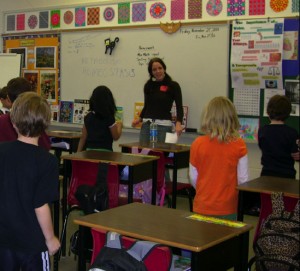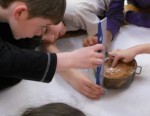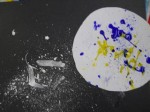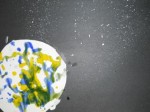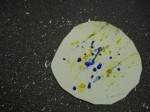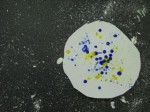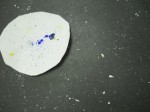The impact of meteorites
May 2, 2012 in Space
Friday, April 29th, 2011, Molecules of Life made impact with Ms Paula’s 3rd grade class at FACE school, as meteors were presented by team meteorite featuring Robert Hopewell (M.Sc. University of. Montreal) and Caroline Steele (BFA, Concordia University.)
Quebec is home of Manicouagan crater, which has a 65 km diameter produced from the impact of an asteroid hitting the Earth 200 million years ago. The students knew that the impact of another asteroid around 60 million years ago is theorized to have led to the extinction of the dinosaurs and that the craters on the moon were due to asteroid and meteoroid impacts. Meteoroids are mostly ice and may be considered as dirty snowballs, which for the most part melt when coming in contact with the Earth’s atmosphere, which leaves usually only tinier rocks that fall to the ground as meteorites. The moon has no significant atmosphere such that the impact of a meteoroid leaves larger impact craters as well as dispersion lines from the displaced soil and rocks.
Exploring meteorite impact further with a series of experiments, the students dropped different stone-like objects into a pot containing flour covered with cocoa. Using rulers, they measured the depth of the impact and the distance of the radii of the dispersed particles. Using stones of different weights yet similar size, they gained an appreciation for the effects of mass on the force of impact. Dropping the stones from different heights, they gained an appreciation for the effect of the distance traveled by the stone on its force of impact. As the students predicted, deeper craters and longer distances of dispersed flour were measured when dropping heavier objects as well as when the same object was dropped from a greater height.
Employing what they learned of the relationship between force and dispersion distance, the students used pipettes to drop paint onto a white paper circle. Similarly, they used the force of a plastic knife scraping against a toothbrush to disperse white paint onto black paper. Combining the two, images, the students prepared pictures of planets impacted by meteorite-made craters in space.
Impressed by the power of meteorites and the impact of their forces on the depth of craters and the distances of dispersion radii, the students thanked Robert and Caroline for a project that engaged their imaginations like a shooting star.
For more on Manicouagan Impact Crater, Quebec, Canada www.lpi.usra.edu/publications/slidesets/geology/sgeo/slide_18.html


